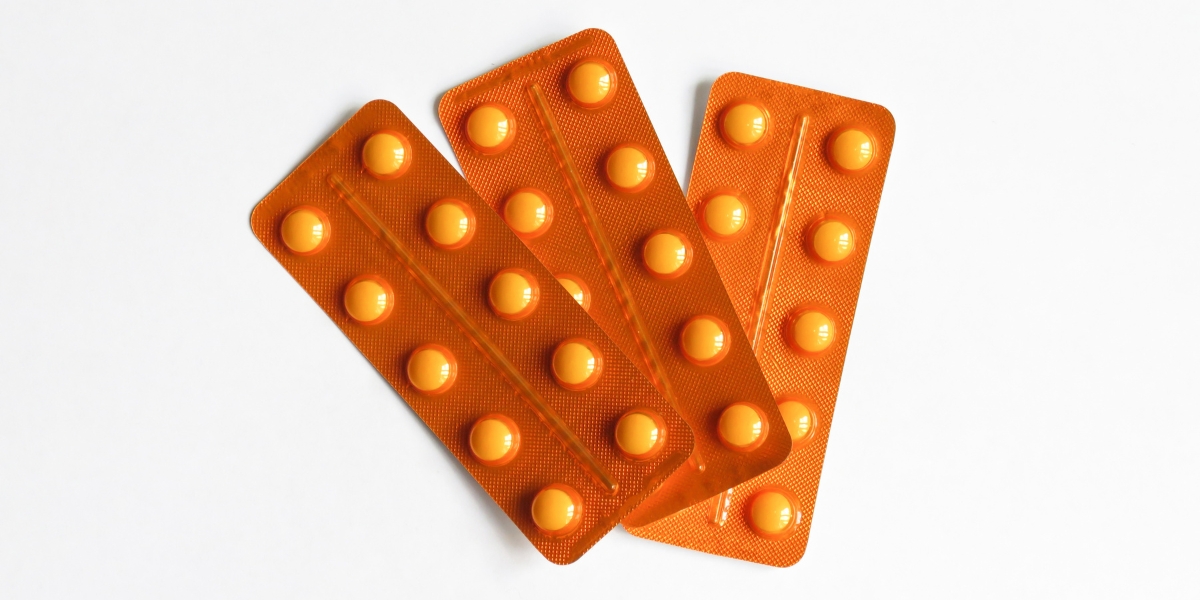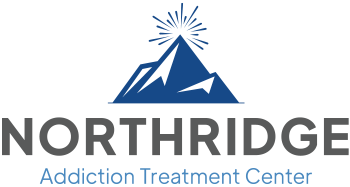What Is Flexeril? Uses, Overdose, and Addiction

Featured pic: A blister pack with orange-ish pills in it
As one of the most commonly prescribed skeletal muscle relaxors, Flexeril is not the first prescription drug to come to mind when discussing addiction. However, like many people who start taking prescription drugs for an injury, many become addicted to Flexeril and continue to struggle with addiction long after their initial injury has healed.
In recent years, emergency rooms have seen a drastic increase in patients suffering Flexeril complications and overdoses. Addiction centers and treatment facilities have also seen a rise in patients abusing prescription muscle relaxers as a pattern of polysubstance abuse.
Struggling with Flexeril addiction involves unpleasant side effects, physical and mental health problems, and complicated withdrawal symptoms if patients try to quit without medical supervision. Learn about Flexeril’s risks, side effects, and how to get help for addiction.
What Is Flexeril?
Flexeril is the name brand of the prescription drug cyclobenzaprine, a skeletal muscle relaxant. Doctors prescribe Flexeril for short-term relief from muscle spasms and injuries like sprains, strains, or hyperextension.
Muscle relaxers are usually part of a broader treatment plan, including rest, physical therapy, wraps, and soaking injured areas to facilitate healing and eliminate the need for medication.
Flexeril works differently than painkillers by targeting areas of the brain rather than directly interacting with the site of an injury. Because of its unique action mechanism, Flexeril gives feelings of sedation and pain relief but not immediate euphoric or body-wide euphoric highs.
Even though Flexeril is not a narcotic, people can still develop a mental and physical dependence on it, especially when they mix the drug with other substances to enhance its relaxing properties.

Is Flexeril a Controlled Substance?
Flexeril is not a controlled substance because it is not a narcotic pain reliever. The United States Drug Enforcement Agency (DEA) considers it a low risk for abuse and addiction. Despite not being a controlled substance, patients need a prescription for Flexeril.
Flexeril is structurally and functionally similar to tricyclic antidepressants in that it works through the brain and central nervous system (CSN), mainly the brain stem, to alter and block pain signals, as opposed to painkillers that work directly on the site of the injury.
All prescription drugs have the potential for abuse and addiction, especially when mixed with alcohol or drugs. Sharing prescription drugs like Flexeril or taking them without a valid prescription is still illegal, even if they are not technically controlled substances.
Taking more than the recommended dose or combining prescription drugs with alcohol or drugs is considered abuse.
What Is Flexeril Used For?
Flexeril is used to treat muscle spasms and pain from muscle injuries. Flexeril works to regulate or block signals that cause muscle spasms or pain.
Some doctors prescribe Flexeril for chronic pain conditions like fibromyalgia, muscular dystrophy, and other connective tissue or musculoskeletal diseases.
Skeletal muscles are connected directly to bones and are 30 to 40% of the muscle structure in the body and control voluntary movements. When nerve impulses aren’t working correctly, muscle spasms occur. Sprains, strains, tears, and other muscle injuries cause discomfort and pain.
Ideally, patients take Flexeril short-term to enable them to do physical therapy and other treatments to heal the injury causing their pain. Except for rare cases like the diseases mentioned above, Flexeril is not for long-term use.
Flexeril Dosages, Forms, and Strengths
Depending on the severity of the injury or condition, the doses of Flexeril, strength, and how many times a day you take it will vary. Flexeril is the most common brand name, but cyclobenzaprine comes as other brand names. It is always an oral tablet or extended-release capsule.
The general forms, strengths, and doses of Flexeril or cyclobenzaprine include:
- 5mg 3 times a day as an oral tablet
- 7.5mg 3 times a day as an oral tablet
- 10mg 3 times a day as an oral tablet
- 15mg 2 times a day as an extended-release capsule
- 30mg 1 time a day as an extended-release capsule
The maximum dose of Flexeril should never exceed 30mg a day. You must tell your doctor or pharmacist about all other medications you are taking, prescription drugs, and over-the-counter medications or supplements.
A type of antidepressant called monoamine oxidase inhibitors (MAO inhibitors) affects the same chemicals in the brain as Flexeril; taking both can lead to fatal drug interactions. If you take an MAO inhibitor or have taken one in the past 14 days, your doctor will not prescribe Flexeril.
Flexeril Side Effects
On its own, Flexeril doesn’t have many side effects or cause intense feelings of euphoria or a high, but some people mix the drug with other substances to enhance its impact. As with all medications, the stronger the dosage, the more likely you will experience side effects.
Most doctors start patients on a low dose to see how they react to the drug and increase it if needed. Mixing Flexeril with other central nervous system depressants like alcohol, opioids, or benzodiazepines can lead to dangerous drug interactions or overdose.

Short Term
Short-term side effects resolve as the body acclimates to Flexeril or once you are no longer taking Flexeril.
Short-term Flexeril side effects include:
- Feelings of sedation
- Relaxation
- Drowsiness
- Dry mouth
- Dizziness
- Blurry vision
- Irregular heartbeat
- Nausea
- Heartburn
- Extreme tiredness
- Itchiness
- Rash
- Chest pain
- Swelling in the face or tongue
- Trouble breathing
- Difficulty swallowing
Some side effects may indicate an allergic reaction to Flexeril; if the symptoms become severe, seek emergency medical attention.
Long Term
Long-term side effects result from prolonged use of Flexeril that can cause chemical changes and health conditions. Abusing Flexeril with other substances, like CSN depressant drugs or alcohol, and pre-existing physical or mental health problems increase the risk of long-term side effects.
Long-term side effects of Flexeril include:
- Physical dependence
- Constipation
- Frequent urination
- Difficulting urinating
- Insomnia
- Changes in taste
- Muscle weakness
- Twitching
- Numbness in the limbs
- Irregular heartbeats
- Confusion
- Depression
- Hallucinations
- Tinnitus or ringing in the ears
- Increased risk of heart attack
Flexeril Withdrawal
Once there is a physical dependence, you will experience Flexeril withdrawal if you abruptly stop taking it. Though it is rarely life-threatening, Flexeril withdrawal, similar to withdrawal from tricyclic antidepressants, can be uncomfortable enough to make people continue their substance abuse to avoid them.
Flexeril withdrawal symptoms include:
- Dizziness
- Chills
- Sweating
- Headaches
- Muscle aches
- Mood swings
- Muscle spasms
- Anxiety
- Insomnia
- Restlessness
- General discomfort

Flexeril Overdose
Each year in the United States, about 12,000 people will visit an emergency room due to Flexeril overdoses. The numbers increase with the addition of alcohol and drugs. Since 2004, there has been an 84% increase in suicide attempts involving prescription muscle relaxers.
Signs of a Flexeril overdose include:
- Extreme drowsiness
- Confusion
- Slurred speech
- Difficulty speaking
- Slow or delayed movements
- Nausea
- Vomiting
- Tremors
- Hallucinations
- Seizures
- Loss of consciousness
Taking MAO inhibitors while taking Flexeril can cause serotonin syndrome, which can be fatal. Serotonin syndrome occurs when the brain cannot regulate the production of serotonin, typically because of medications that affect it, and the entire system gets flooded with it. Symptoms of serotonin syndrome include fevers, seizures, changes in heartbeat, and unconsciousness.
Call 911 immediately if you believe you or a loved one are experiencing a Flexeril overdose or dangerous drug interactions.
Flexeril Addiction
If you or a loved one is struggling with Flexeril abuse or addiction, Northridge Addiction Treatment Center can help provide evidence-based treatment with a personalized approach.
At NATC, we offer patient-focused care centered around your unique needs and comfort to help you learn how to live a life free from substance abuse.
Onsite medical detox ensures you receive medical care and supervision to keep you as safe as possible during withdrawal. Our dual diagnosis program addresses co-occurring mental health conditions that may be fueling your addiction. After you leave our facility, we aim to have you equipped with the skills and knowledge to maintain a fulfilling life in recovery and conquer challenges.
Our passionate treatment specialists are eager to help you take the first steps to recovery. Reach out to us now.
Find Meaningful Recovery
Our caring and compassionate specialists are eager to help you comfortably navigate this journey to recovery. Our individualized treatment plan, programs, and therapies may be a perfect match for you or your loved one. Let us assist you in living the happy life you deserve. It starts with a phone call.




